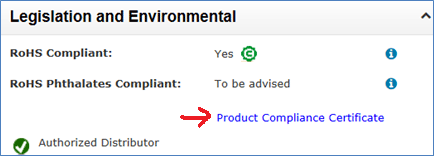If you want to make electronics and sell them to people*, there are a number of regulations you need to follow. Some of them are RoHS and REACH, which deal with the restriction of certain substances in anything that is sold in Europe. If you put a CE mark on your product, which is required for selling electronic products in the EEA (EØS), it is a declaration that your product complies with these standards (among others).
*conditions and exceptions apply
What is RoHS
The Restriction of Hazardous Substances Directive (or Directive on the restriction of the use of certain hazardous substances in electrical and electronic equipment to friends) says that you can't have Lead, Mercury, Cadmium, Hexavalent chromium, Polybrominated biphenyls, Polybrominated diphenyl ether, Bis(2-ethylhexyl) phthalate, Butyl benzyl phthalate, Dibutyl phthalate or Diisobutyl phthalate in your product, above certain limits given in parts per million (ppm). Actually, not only are you not allowed to have those things in your product, you also need to be able to document that you don't. In fact, it's not enough to be below the limits for the overall mass of the product; you also need to be able to prove that every subassembly and component of your system is below the ppm limits individually.
What is REACH
Registration, Evaluation, Authorisation and Restriction of Chemicals is like RoHS but more complicated, encompassing 209 substances as of 2020. It has been described as "the most complex legislation in the history of the EU". Fortunately, the practical steps to implement it are the same as for RoHS. Unfortunately, as opposed to RoHS, this list may be updated 2-4 times a year. In principle each update may add new relevant requirements for compliance, making previous compliance outdated.
What do I actually do help
Thankfully, most of the work of complying with these standards has already been done by the major professional component suppliers.
- When designing your electronics, use a professional supplier such as Farnell, Digi-Key, Mouser. Make sure to filter out non-RoHS components when picking components.
- While not strictly necessary for prototypes that you won't sell, it's probably a good idea to do use only RoHS components from the start.
- When getting ready to sell your product, gather documents for each component in your product. Look for something like this:
If a certificate is not available, the supplier should be able to retrieve the certificate for you. You can e.g. email farnell at productcompliance@farnell.com to request a certificate in case of a missing or outdated one. - Make sure to store the documents safely. There is only a theoretical chance that your supplier will stop hosting them, but you are legally obliged to have the documentation available.
- That's all!
